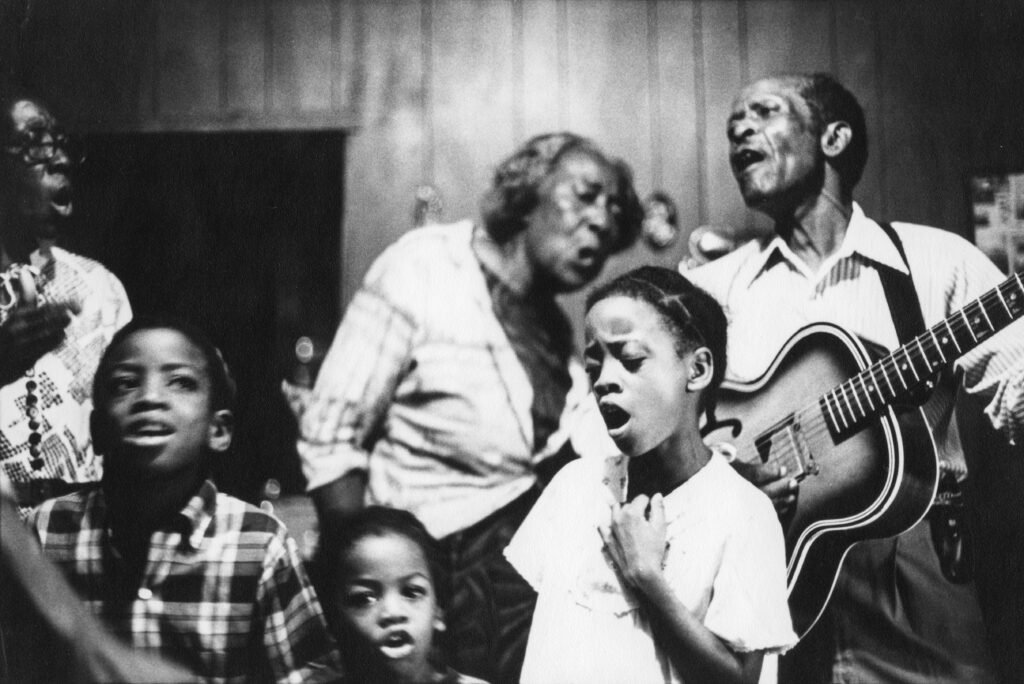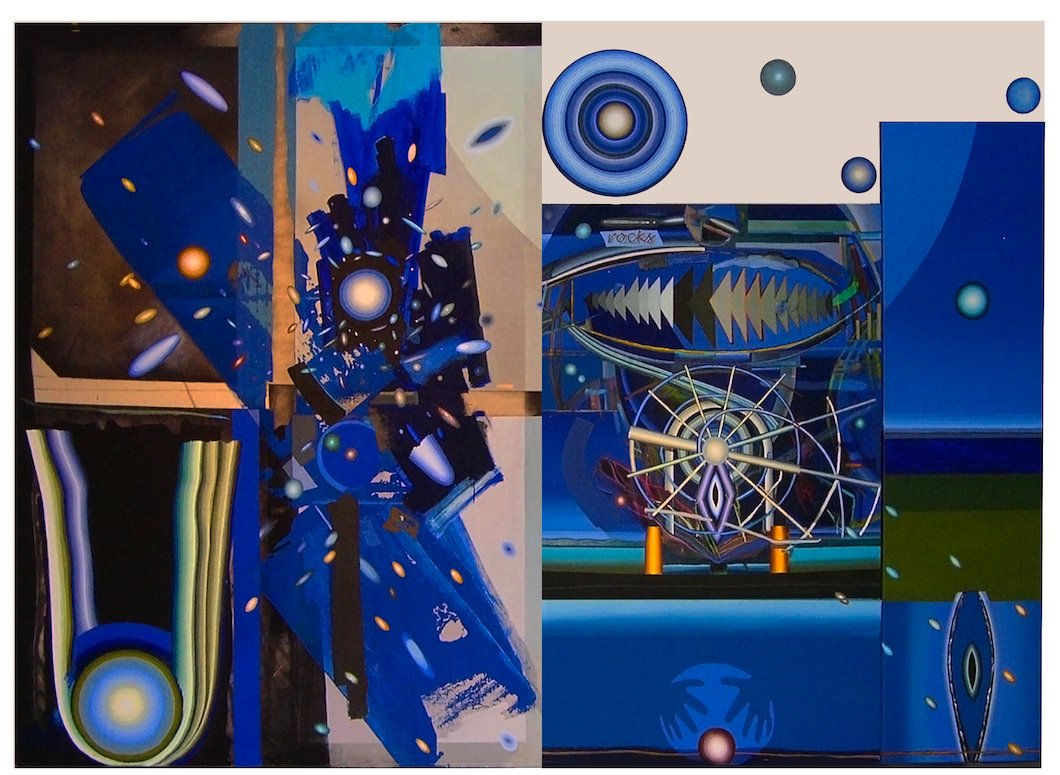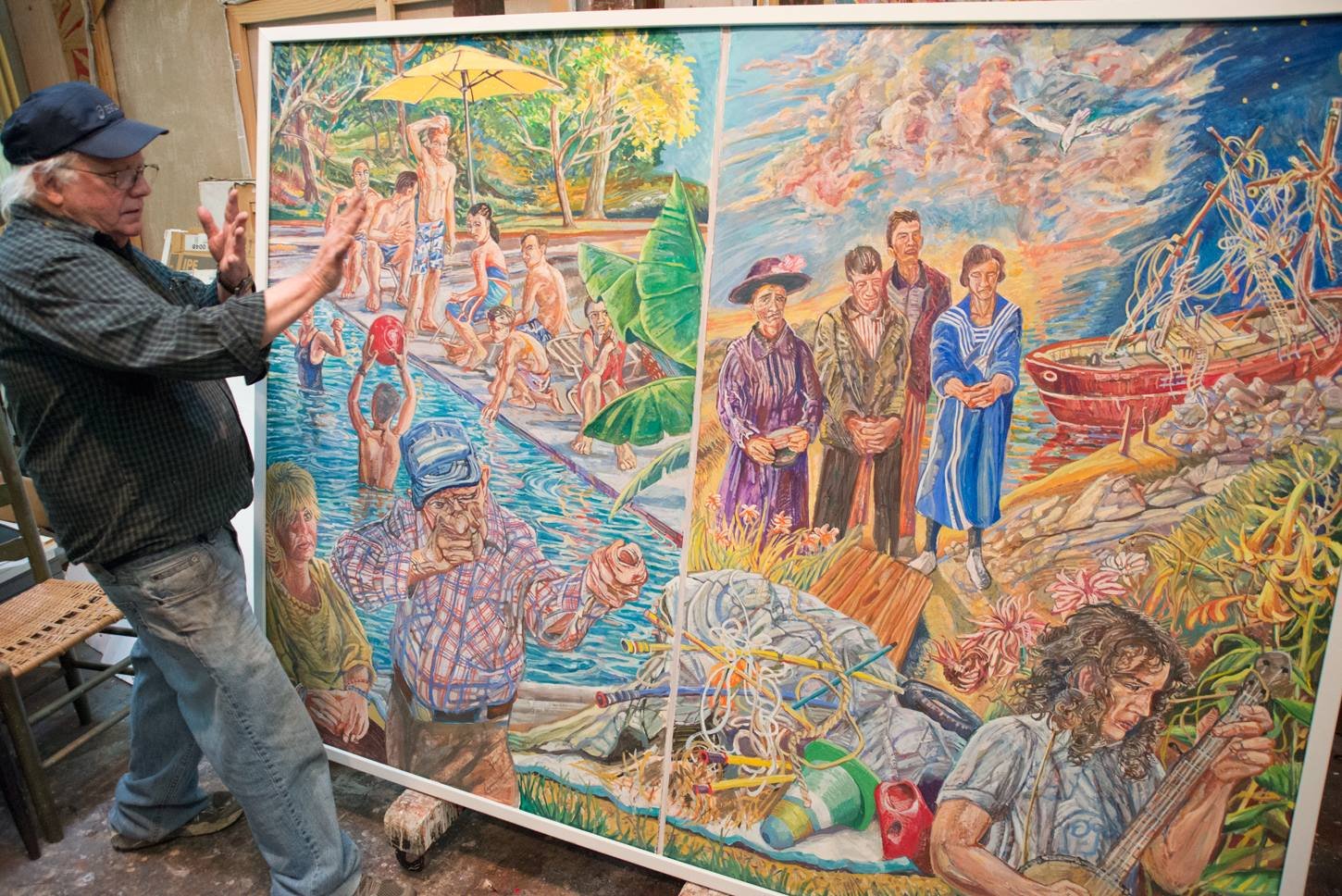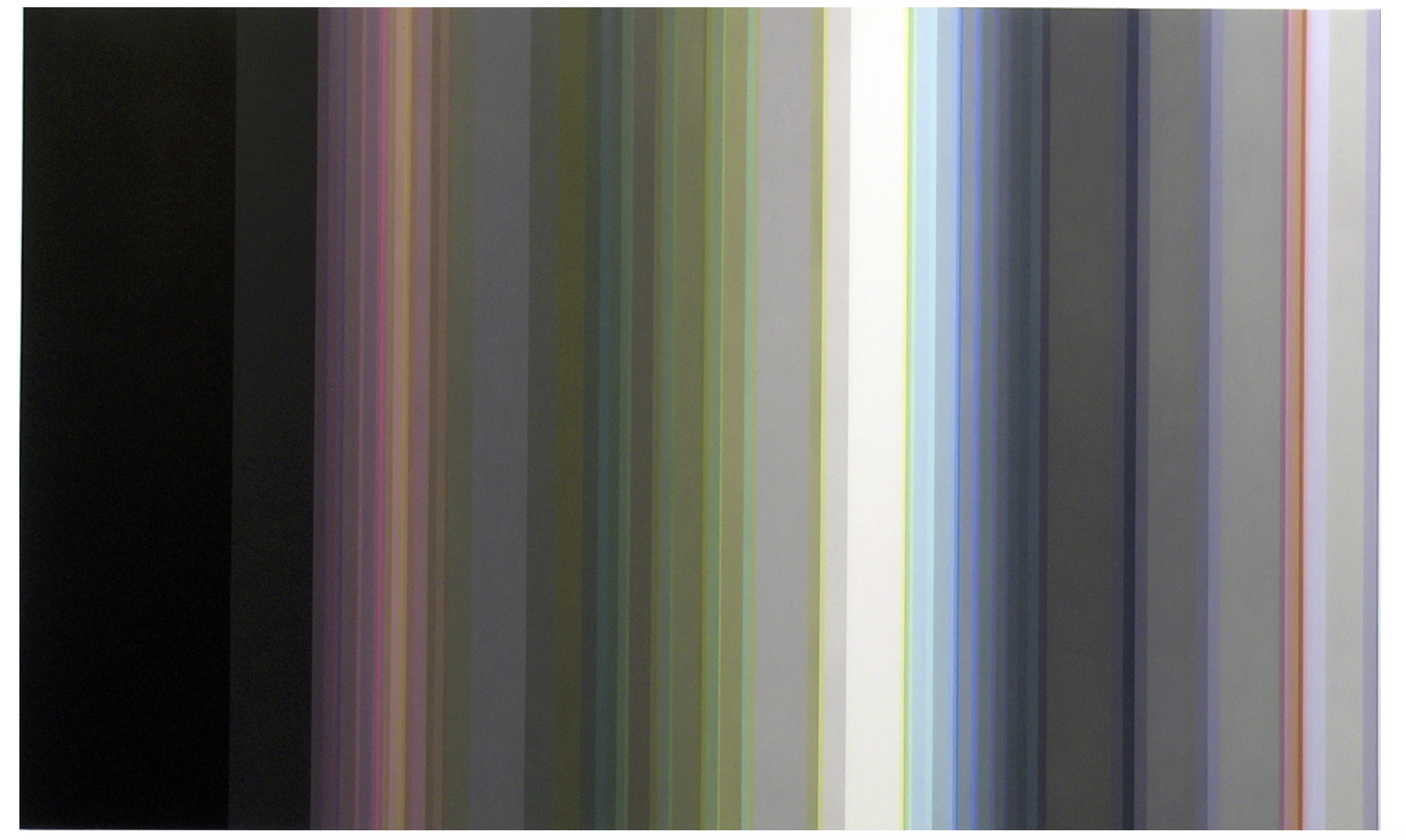Margo Newmark Rosenbaum
Based in Athens GA, Margo Newmark Rosenbaum is a celebrated photographer and musician. Born on February 17, 1939, she earned her bachelor’s degree in painting and drawing from the San Francisco Art Institute in California and her master’s degree in the same field from the University of Iowa. In 1966 she married Art Rosenbaum, also an artist and musician. She moved with her husband in 1976 to Athens, where he began teaching in the Lamar Dodd School of Art at the University of Georgia.
Over the years, Rosenbaum has collaborated with her husband on numerous projects, most notably photographing folk musicians as he recorded their performances. Later she began working in large-scale digital photography, displaying images taken in Ecuador and Japan at the 2010 exhibition New Work by Art Rosenbaum and Margo Newmark Rosenbaum in Athens.
Rosenbaum’s photograph Doc and Lucy Barnes with Kids Singing (1977) is part of Georgia's State Art Collection. READ MORE
Judith McWillie
Judith McWillie is professor emeritus of drawing and painting at the Lamar Dodd School of Art of the University of Georgia. Her paintings and photographs have been exhibited throughout the United States and Europe. She is author of numerous essays in arts and culture publications such as Metropolis and Artforum, as well as anthologies such as Testimony: Vernacular Art from the African American South, Keep Your Head to the Sky: Interpreting African American Homeground, The Art of William Edmondson, and Dixie Debates: Perspectives on Southern Cultures. She is co-author with Grey Gundaker of No Space Hidden: the Spirit of African American Yard Work, winner of the 2007 James Mooney Award of the Southern Anthropological Society. READ MORE
Steve Prince
Heather Beardsley
installation/ Works on Paper 2023
Three Excellences of Culture: Painting, Poetry and Music, the Work of Art Rosenbaum and Friends
Pearl Fincher Museum of Fine Arts, Spring Texas
This fall the Pearl is proud to present, in cooperation with the Linda Matney Gallery in Virginia, a colorful exhibition featuring the narrative painter Art Rosenbaum; his wife, professional photographer Margo Newmark Rosenbaum; and the friends and former students they met along the way. The exhibition opened to the public on Saturday, September 24, 2022 READ MORE
INTERVIEW WITH ART ROSENBAUM, 2015
BY KRISTEN PEYTON FOR MATNEY GALLERY WITH ADDITIONAL MATERIAL BY JOHN LEE MATNEY
I was a kid artist. I didn't come to it later. I was making art when I was just a few years old, scribbling and drawing. My mother was an artist; she’s from New York and studied at the National Academy and did medical illustrations. She encouraged my efforts. Art was the direction I was headed since I was very young, and I have kept it going along with the other things I have done in my life. READ MORE
Vanessa Briscoe Hay
Conversation with Vanessa Briscoe Hay and Sandra-Lee Phipps
Matney Gallery recently spoke to artists Vanessa Briscoe Hay and Sandra-Lee Phipps about their work, their friendship over the decades, and their collaborations on Sandra’s series of photographs, Lesson in Survival. Both artists are profoundly influential Athens, Ga, music, and art scene veterans. Vanessa Briscoe Hay is the lead singer of the legendary Athens band Pylon Sandra-Lee Phipps, a professor of art at The Savannah College of Art and Design known for her iconic early photographs of R.E.M. READ MORE
Sandra Lee Phipps
John Lee Matney, Jeremy Ayers, 1994
Psychological Landscapes REVISITED, OCTOBER 24, 2023
Jeremy Ayers was highly influential for me as a photographer when I moved to Athens GA in the 1980s. We were never extremely close, but he had a mysterious and powerful creativity that drew me into many questions about art. We started having deeper conversations in 1991 on College Square in Athens when I started delving more into medium-format photography. I bought a Mamiya 6 and then an RZ-67, and Jeremy was one of my first subjects in experiments with portraits. In 1994, I felt I needed a change from Athens and asked him for advice. He said,'. "Leave town for a few years, and you will find things are much better when you return." I left for nine years, worked at my first gallery job, and started exhibiting many of the images and ideas I was working on in Athens. Jeremy's words felt prophetic when I returned in 2003 for a one-person show at Paul Thomas's X-ray Cafe. Athens received the work well. The Athens Banner-Herald covered the show with a full-page article, and Flagpole published a video still on the cover during the exhibition. Jeremy confided to me that he had made paintings from my photographs, and we corresponded until he passed in 2016. Today marks the seventh anniversary of his passing. He is such an inspiration to many people in Athens and worldwide.August 2003
In our conversations from 2003 onward, we discussed images and stories. I was particularly intrigued in the early 90s by a circular hologram that Jeremy carried, which he would flash at others with similar holograms, and he would run out of the building where I had a studio. Some of the works in 2003 were inspired by my perceptions of Jeremy with his hologram. The 2003 exhibition with some additional material is linked here. Missing Jeremy dearly. READ MORE
John Lee Matney, Shelia, 1998
Kathryn Réfi
REVISITING Art House On City Square AND TEMPORAL DISTORTIONS: ARTisTs Working in the Contemporary South
Curated By John Lee Matney and Tyrus Lytton
The art in Temporal Distortions is brought together from world-class artists working in the contemporary south. They are leaders and innovators in their fields, each bringing a unique voice and methodology. The work has a synchronicity: searching for understanding through and of place. Much of the recent philosophical history dealing with the question of what place is and how we operate within or around it has taken hold of many centralizing ideas with its roots in Martin Heidegger. Even the latest metaphysical fashion of Object Oriented Ontology (OOO) deals with an inside versus outside placing. “OOO” is a metaphysical concern of whether things exist only within our perceptions or independently of them. As a culture of nomads able to travel great distances via automobile, bus, train, boat, or airplane, our sense of place is constantly changing in a manner that yesterday and tomorrow may not comprehend. Orson Welles and Alvin Toffler described this as a symptom of “Future Shock.” Curtis Mayfield wrote one of his best songs dealing with aspects of this. Once seen as a sickness, we now barely question it as a fact of life. Change has always come with unsettling maneuvers for some, and there are always seemingly new or different pressures accompanying it. The collection of works presented in this exhibition not only questions our interaction/being with place but also celebrates it. They celebrate it as someone who truly celebrates a lover by not discounting the dark desires from the light ones or a hairy nostril from a delicate earlobe. READ MORE
Michael Oliveri
Kent Knowles
Art Collector Ben Ellington Discusses the Work of Kent Knowles
In the same way that our dreams are often manifestations of the important events happening around us, Kent Knowles' paintingS like Dark Animals seem to bring to life our fears, strengths, and possibly even the importance of the many symbiotic relationships that occur in our world. READ MORE
Mark Miltz
Nudes, The Mirror, The Big Tent
Brian Kelley, 2023
The figure, the nude, is the closest thing to a mirror for ourselves in art. The scope of nude art is broad in time, going back to ancient periods. It is also diverse in approach and intention. There are ideal nudes of a kind of transcendent human form, but also imperfect, real people living in specific times and places. There is nudity that is chaste, but also nudity that is erotic, possibly even naked. In America, nudes can be inherently charged for general audiences who use terms like “family friendly” or “tastefully done.” For others, especially in contemporary art and current identity politics, there is a deep fascination with the very idea that we live corporally “in a body,” and the nude is the motif of choice for many artists to address this topic. “Nude: A Contemporary View,” the current exhibition at the Matney Gallery, curated by Diane Blanchard Gross and John Lee Matney, adeptly covers this broad subject, and exposes viewers to the state of contemporary figurative art. READ MORE
Installation VIiew
INTERVIEW WITH WILLIAM RULLER
Recently we had the opportunity to interview William Ruller, a current featured artist at the Linda Matney Gallery. Through conversation regarding his childhood in upstate New York, his history with use of tone and color, and his work currently featured at the gallery, he contextualizes his art in a broader dialogue about disaster and human intervention. Ruller’s artwork reflects a childhood spent living in an environment contaminated by humans. Through anecdotes about his early life in upstate New York, Ruller describes the connection between his childhood memories and the abandoned, disintegrating environment featured in his art. His pieces underscore themes of nature, decay, and cycles of deterioration and regrowth. Abandoned buildings, structures, and their effects on the living environment are key elements to his work. READ MORE
Ivan Plusch
Artist Interview with Ivan Plusch: The Existential Threshold within Paint
By Isabella Chalfant
Ivan Plusch, is an artist that has developed a style of painting that evokes questions about time itself. His paintings ooze and flow in different directions allowing time and gravity to accompany him as the artist in a collaborative dance. Plusch, born in 1981, graduated from the St. Petersburg Academy of Art and Design in St. Petersburg, Russia. He later attended Cite Internationale des Artes in Paris, France. Ivan currently resides in Hungary and has been living there since 2016. Given his unique painting technique, the Matney Gallery conducted the following interview to better understand his painting process and his artist’s purpose.
The first question we ask our artists when conducting an interview is,” What is your vision as an artist?” This question immediately delves into the core of the artist’s
work allowing the rest of the interview to elaborate on different subjects within this vision. READ MORE
KRISTEN PEYTON: THE FUNCTION OF LIGHT OCTOBER 13- NOVEMBER 26, 2018
Poised Space
It is one of those lovely balmy late summer days, not too hot, the sun gently wraps itself around you as you sit quietly on a porch with a dear friend, all feels just right with the world. Such is the invitation to enter the space of Kristen Peyton’s paintings. They invite us to lope in, sit down and spend some time. We know these spaces, this atmosphere. There is an air of nostalgia. The places are familiar. We are at ease.
There is a grace and serenity to Peyton’s paintings. They bid us to linger, to stay a while. We feel the warmth of the light and the air. Though for all of the nostalgia and familiar- ity the paintings elicit, ultimately, they are not spaces we have the privilege of strolling about. They are taut. The act of painting, of applying the paint to the support—what one might collectively call the concerns of painting—is always present. Swaths of paint perform a dual purpose framing the space of the paintings and obstructing our en- trance. As we descend into the space we are pushed back, held at bay by the conventions of painting. This is, I believe the brilliance of Peyton’s work, the moment between the beckoning to enter and the tension produced as we are reminded, nudged if you will, back into acknowledging this is after all a painting we are looking at. The reminder that it is mere paint on a support that we are looking at frees the light and the color to take center stage. READ MORE
INTERVIEW WITH LUTHER GERLACH PART
Luther Gerlach was born in Blayne, Minnesota in 1960. He apprenticed with Brett Weston in the 1980’s, before learning the wet plate process which he still works in today. Selected permanent collections include the Los Angeles County Museum of Art, The J. Paul Getty Museum, and the Michael G. Wilson Centre for Photography, among others. READ MORE


















